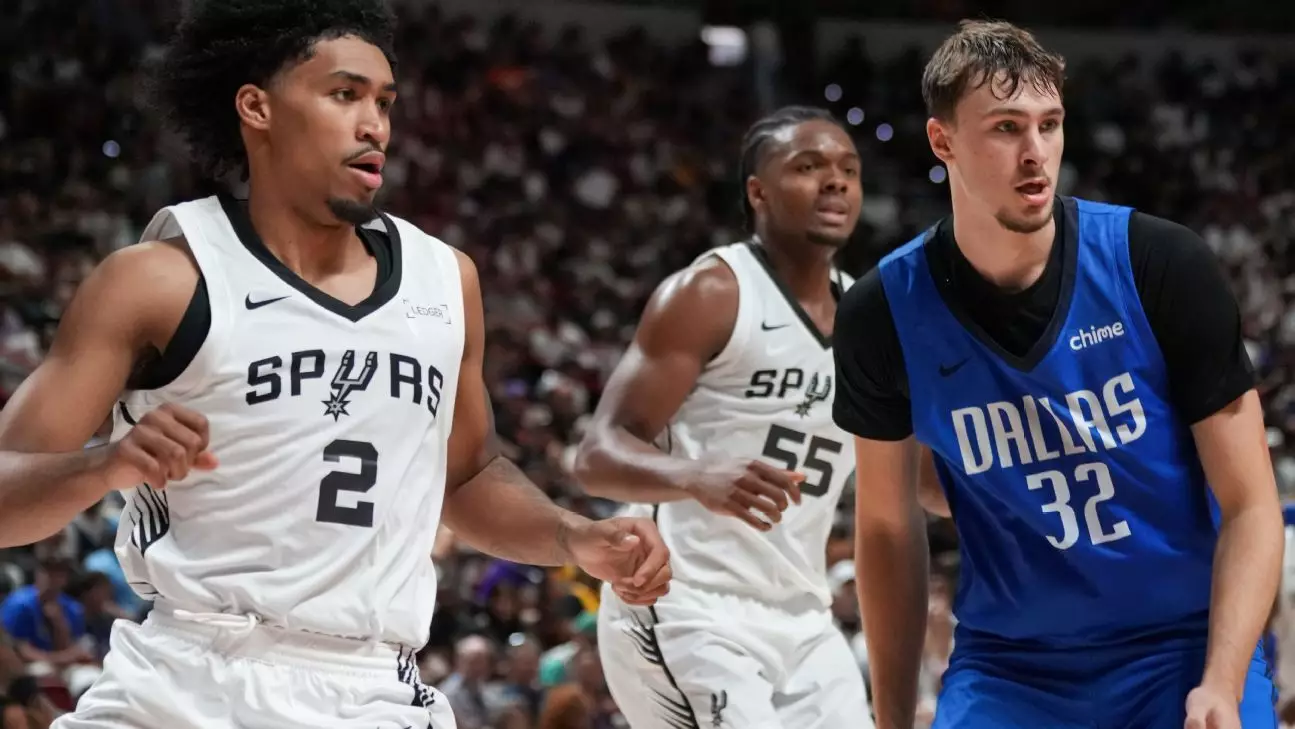The recent showdown between the top picks of the 2025 NBA draft, Cooper Flagg and Dylan Harper, offered a tantalizing peek into what could define the league’s next wave of talent. Set against the electrifying atmosphere of the Las Vegas summer league, these young athletes demonstrated talent that is undeniably promising. However, this spectacle, while visually stimulating, warrants a skeptical lens—are we truly witnessing the birth of the next legendary duo, or merely an illusion crafted by hype and fleeting adrenaline?
Flagg’s performance was dominant, tallying an impressive 31 points, often showcased through spectacular dunks that lit up the arena. Harper’s return from injury and quick adaptation showed resilience, ending with 16 points in just 20 minutes. These performances, although impressive on a surface level, should prompt us to question whether such displays are sustainable or exaggerated by the intensity of summer league settings. The early signs point to potential, but potential alone is an insufficient foundation for lasting greatness, especially when maturity and consistency are still in question.
Excitement Overlays the Reality of Development
The presence of seasoned NBA players, icons, and celebrities like Cedric the Entertainer and Jason Sudeikis added an atmosphere of grandeur to the proceedings. Yet, amidst the glamour, lies the question: Does such spectacle skew our perception of genuine skill? Youthful exuberance often inflates the significance of minor achievements on a big stage, leading fans and analysts alike to elevate these players prematurely. Flagg’s ability to draw fouls and Harper’s athleticism are undoubtedly qualities to nurture, but the leap from summer league heroics to league stardom is fraught with pitfalls—injuries, inconsistent performances, and the relentless pressure of high expectations.
Both players struggled with shooting efficiency early on, with Flagg missing numerous free throws and Harper cooling off after an energetic start. These flaws are the true tests of their development. Turning potential into proficiency demands more than highlight-reel plays; it requires a steady mental approach, an ability to adapt under pressure, and a resilient attitude toward failure. If their summer league displays are any indicator, these young stars must temper their enthusiasm with humility if they aim to avoid the burnout of inflated expectations.
Is the NBA Overhyping Youth for the Sake of Spectacle?
The league’s fascination with youthful talent has reached a point where it sometimes borders on spectacle entertainment rather than genuine player development. Summer league games become highlight reels, which, while entertaining, don’t tell the full story of growth—namely, how these players will handle adversity and prolonged competition.
In this context, the media and fans are often complicit in fueling the hype train that surrounds young prospects. Flagg and Harper, both promising athletes, are being positioned as future franchise cornerstones with a media narrative that can sometimes overshadow their actual progress. Moreover, selecting these players as the main attractions before they’ve proven durability or consistency risks creating a false sense of security. It’s reminiscent of a mirage—momentarily captivating, but possibly illusory upon closer inspection.
The reality is that sustainable excellence in the NBA doesn’t come from flash and highlight plays alone; it stems from a mindset rooted in continuous improvement, physical and mental resilience, and a deep understanding of the game’s nuances. If the league and its fanbase are not careful, they will end up idolizing spectacle, neglecting the grit and perseverance needed for long-term success.
Are We Ready for the Responsibility Young Stars Carry?
While the allure of these young talents excites the sports world, their rapid ascent raises questions about maturity and readiness. Harper’s injury setback offered a lesson in patience, channeling the reality that even promising prospects require time to develop physically and mentally. Flagg, with his occasional shooting struggles, exemplifies a player whose raw talent is undeniable but who must develop consistency and self-awareness to truly thrive.
The league’s tendency to elevate these players into a hero mythos can be dangerous if not managed carefully. The pressure to perform can lead to mental exhaustion or reckless play, risking careers before they truly start. Success in the NBA isn’t about scoring points in Summer League or making highlight plays; it’s about consistent performance, strategic growth, and handling failure without losing composure.
These early career performances should be viewed as valuable, yet incomplete pieces of a much larger puzzle. The promise of Flagg and Harper must be matched with a sober understanding that greatness is a marathon, not a sprint. Sensational moments may stir temporary excitement, but the real challenge lies in nurturing these skills beyond the bright lights of summer games. Only then can we determine whether they are genuine game-changers or merely fleeting stars caught in the limelight.


Leave a Reply